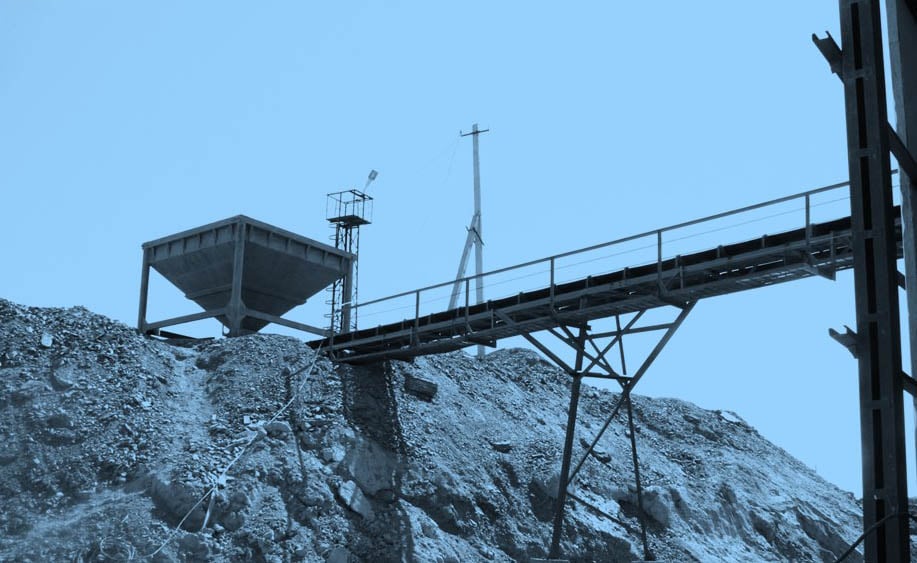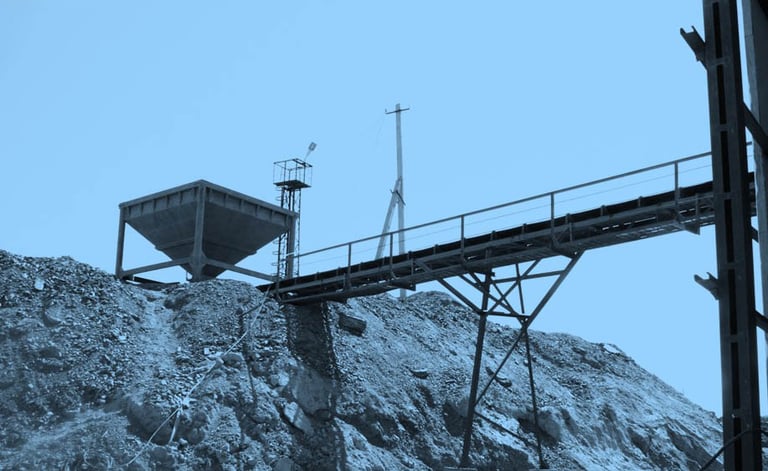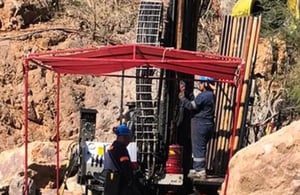Ferro-Alloy Resources Ltd (LON:FAR), the vanadium producer and developer of the large Balasausqandiq vanadium deposit in Southern Kazakhstan, has announced an update on the progress of the expanded feasibility study for the large Balasausqandiq vanadium deposit.
Highlights
· Drilling programme 50% complete
· Early results of an 800m section of OB1 show a 75% increase in volume and tonnes
· Metallurgical recovery into leach of 93% confirmed
· Acid consumptions of 200 kg per tonne or less indicated.
· Test results show a 40% carbon product can be recovered at 25% mass recovery
· Tests show this product can be used as a substitute for carbon black in tyre manufacture
As previously announced, the scope of the Feasibility Study has expanded considerably since its inception. The original study was designed to confirm the results of previous studies and the operations of the 15,000 tonnes per year experimental pilot plant from which some 20 tonnes of vanadium pentoxide (in ammonium metavanadate) was produced. Those studies, described in the Competent Persons Report of 2018, envisaged project development in two stages, Phase 1 with an output of 5,600 tonnes of vanadium pentoxide per year, followed by Phase 2, with output rising to 22,400 tonnes per year. Combined NPV was estimated at over US$2 billion. Following the investment from Vision Blue Resources in early 2021, the decision was taken to upgrade and expand the Study to include Phase 2 and the more significant by-products.
Consequently, the drilling programme has been expanded to cover ore bodies (OB) 2, 3 and 4 as well as OB1 in order to provide enough reserve to feed the Phase 2 expansion for a targeted 20 year mine-life. The Study is now including all aspects of Phase 2 although the second phase will be announced later than Phase 1. The Phase 1 study is expected to be completed on the previously announced timetable by around the middle of 2023.
Exploration
With support from SRK Consulting (Kazakhstan) Limited, around 10,000m of drilling has been completed out of an expected total programme of 20,000m. Confirmation and infill drilling of OB1 has been completed and full analyses are awaited.
An initial semi-quantitative assessment from field X-Ray fluorescence measurement has substantially confirmed the previous modelling for OB1 but a comparison of the results of the new infill drilling over a 600 m strike length using drill sections 200m apart with the previous resource showed similar geometry but with some thicker mineralised intersections. Based on this highly positive result, the decision was taken to increase the drilling density to 200m sections for the remainder of the drilling programme, leading to the substantial increase in the estimated programme meterage.
Sample preparation is being carried out by SGS in Kazakhstan and the first batches of prepared samples have already been sent to Intertek Genanalysis in Perth, Australia, for sample analysis. The results are expected in the coming weeks. Most of the resource drilling is expected to be completed by the end of Q3 2022 and full sample analyses and modelling should be completed by the end of the year. However, approximately 25% of OB2 is inaccessible to the currently operating drill-rigs. The results from this area will be delayed until more suitable mobile rigs can be mobilised.
Processing
The process design and test work is being carried out by SGS Canada Inc. (SGS) under the direction of Coffey – A TetraTech Company. Under their control, a test programme has been carried out by SGS to confirm recoveries and other process parameters originally achieved by the company at its test-plant in Kazakhstan. Test work has confirmed leach extraction of vanadium as 93%, which is consistent with previous results. Acid consumption, subject to optimisation, was indicated at 200 kg per tonne treated. The very high level of extraction is possible from the ore at Balasausqandiq because it is sedimentary in origin, with little iron content, compared with the more commonly occurring vanadiferrous titano-magnetites from which much lower recoveries are obtained. Moreover, the extraction is achieved from a low-cost process involving whole-ore pressure acid leaching in sulphuric acid media, with no pre-concentration or roasting required.
Sulphuric acid is available at low cost in Kazakhstan as processors use the substantial amounts of sulphur available from desulphurisation of Kazakhstan’s oil production. A study is ongoing into whether it is worthwhile to build a sulphuric acid plant, which would enable the operation to benefit from the exothermic heat to produce steam and power. This was originally envisaged for Phase 2.
Carbon
Two test-programmes are being carried out into the recovery and use of the carbon which makes up around 14% of the ore at Balasausqandiq. This carbon is in a form similar to carbon black. Two main uses have been identified, both of which make use of the silica that forms the bulk of the tailings material. One use is as a flux in smelting of ferro-silicon, and the other is as a carbon black filler substitute in making rubber – principally tyres.
The programme of test work into the use as a flux in smelting is following and extending the previous work done by the Company. Laboratory work on 700kg of material has been completed by the Karaganda Chemical Metallurgical Institute, Kazakhstan, and has demonstrated the suitability of this material for smelting. A bulk test-programme using two tonnes of material is now being carried out by the National Centre for Complex Treatment of Mineral Resources to test the production of ferro-silicon at industrial scale. Previous work has indicated that the material replaces around 50% of the carbon required for making ferro-silicon and 100% of the silica.
The second programme is already largely complete and has demonstrated that a product of 40% carbon can be made by simple flotation, with a mass recovery of around 25%. The production of rubber has shown that when the carbon product is substituted for 20% of the carbon black (grade N550), used as a filler in making tyres, performance is the same as using 100% carbon black. Different types of tyres are made by different manufacturers using different constituents so the suitability of this material for different types of tyres from different manufacturers is a matter for those companies to assess. One tyre manufacturer is currently testing samples as a prelude to commercial negotiations. Other manufacturers will be approached when the test work is completed.
The potential output of this concentrate is potentially over 200,000 tonnes per year from Phase 1, or 800,000 tonnes per year from Phase 1 and 2. N550 grade of carbon black is a relatively high value form of carbon although as the Company’s concentrate will be a non-standard product it is difficult to forecast what discount to the N550 carbon black price might result from commercial negotiations, what level of offtake might be obtained and what transport costs might be incurred.
The Carbon Black market was estimated to be worth some $19 billion in 2020 worldwide, around 70% of which was used for tyres. The market is estimated to be growing by some 4.5% per year, driven by increasing applications in various end-use industries.
Carbon Black is usually made by the incomplete combustion of oil or gas, with only some 40% recovery into product, so the Company’s carbon black substitute will greatly reduce the CO2 associated with carbon black production, and hence tyre production. This opportunity to reduce emissions using FAR’s product is likely to add to the value, either as a means of allowing tyre producers to meet stated carbon reduction targets or, more directly, in reducing carbon emissions payments of our customers.
Other
By-product studies are ongoing into the recovery of uranium, molybdenum and potassium alum in accordance with earlier work. Test-work has indicated a low recovery of rare earth minerals into leach and this aspect of the study has been discontinued.
A tailings study has commenced, with evaluation of design options and potential facility locations. Tailings are comprised principally of the carbon and silica remaining after leaching, so are subject to recoveries as carbon products described above, but even the remaining tailings have potential commercial uses. The tailings design therefore needs to accommodate the various revenue-producing options.
A geotechnical programme is due to commence later this month and contractor proposals are being considered for the open pit hydrogeology work. Geophysical fieldwork for the process water supply borefield is also due to commence shortly.
Ferro-Alloy Resources Ltd (LON: FAR) is developing the potentially very large Balasausqandiq vanadium deposit in Kyzylordinskaya oblast of southern Kazakhstan. The ore at this deposit is unlike that of many other primary vanadium deposits, appearing to be amenable to treatment by a much lower cost process.









































